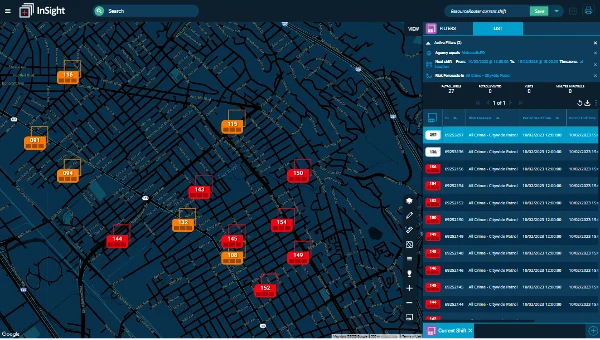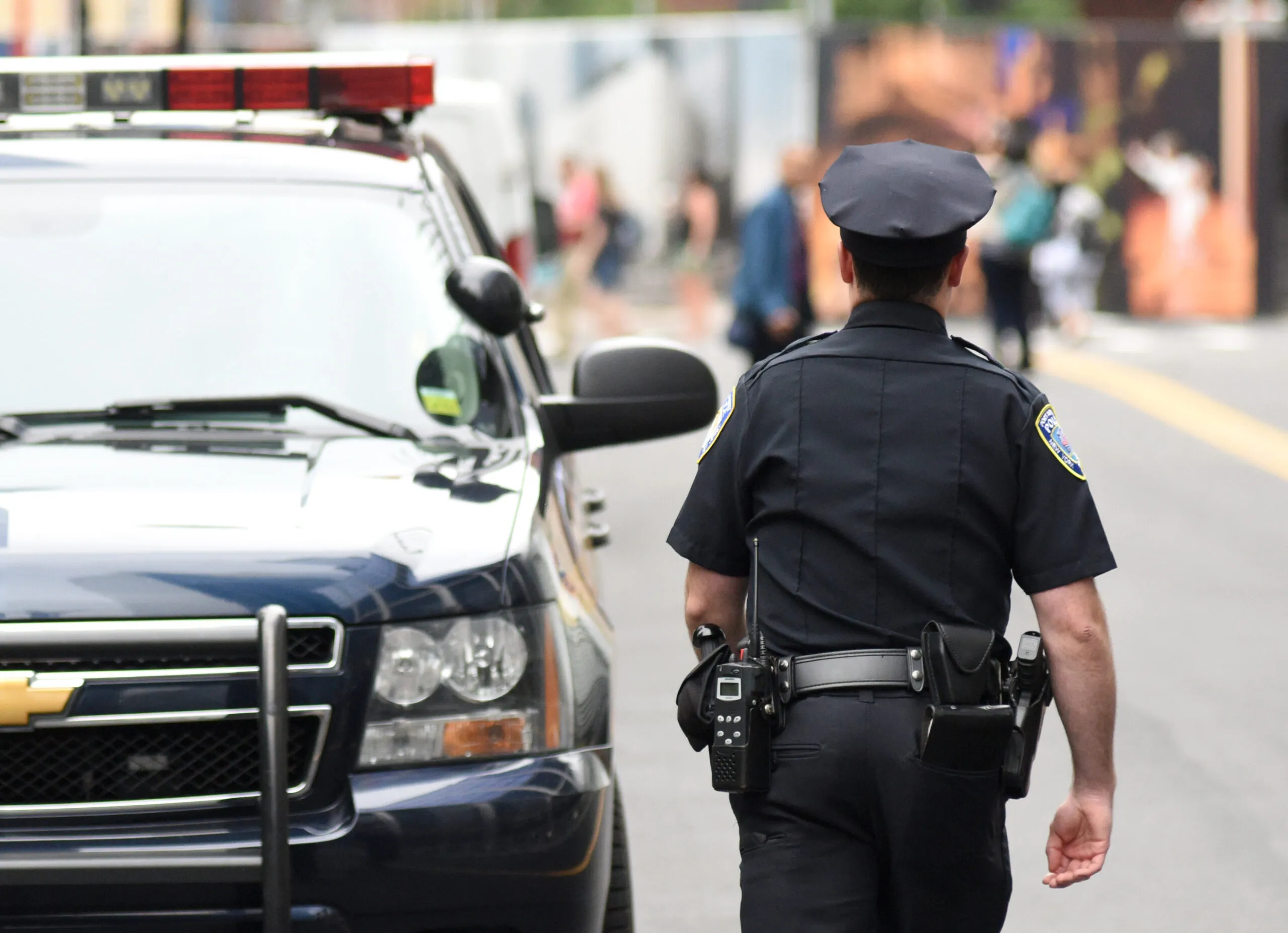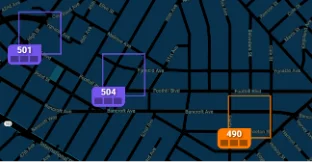Police patrols play a key role in keeping communities safe.
That said, patrol is about more than apprehending active offenders. It’s about creating a sense of security, preventing crime, and identifying and solving community problems that go unnoticed without patrol—also known as problem-oriented policing. More and more law enforcement professionals are trying to align their police patrol strategies to crime prevention efforts in the community.
Unfortunately, this purpose often gets lost or obscured by problems caused by traditional patrol strategies and policing tactics.
Why Patrol Management is Getting More Complex
Over the years, police patrol has become a more complicated issue – for three main reasons.
First, agencies across the U.S. are experiencing significant retention and recruitment challenges. Fewer officers mean more work for the ones that are serving. So, agencies are looking for ways to maximize their existing workforce without overloading them. This has created a need for more precision in how patrols are directed – placing officers in the right place, at the right time for greater impact.
The second reason is about policing tactics. Deciding what tactics to use and when often falls on the officer on patrol. This creates inconsistency and a lack of visibility into patrol activity. With so many different types of situations that can happen on a patrol, training officers on the right tactic can be daunting and difficult to follow.
The final reason patrolling has become more difficult has to do with increasing community pressure for accountability. This includes managing the widespread misconception that police patrols are occupying neighborhoods by over-policing, as opposed to protecting them. Agencies need to find a way to change this perception, and it all starts with the patrol strategy they deploy.
Types of Traditional Police Patrol Strategies
Law enforcement agencies use varying terminology, but, generally, there are three main buckets of police patrol strategies: Gut-based patrols, predictive policing, and hot spot analysis.
#1. Gut-Based Patrol
Gut-based patrol is simply when officers drive around their community and patrol where they believe they should be based on personal intuition and prior experience.
The rule of thumb is to never do the same thing twice. If you turn left one day, turn right the next. This is the easiest approach and prevents any negative community perceptions that you are following a pattern.
However, this puts pressure on officers to direct themselves. Instead of using data or statistics, they’re just going off their own intuition—potentially opening the door to bias. Because officers are making subjective decisions, there is no transparency or tools for accountability or auditing.
#2. Predictive Policing
A step in the right direction, some agencies use historical data of crime events and offenders to predict where future crimes may occur.
While well intended, this method relies solely on historical data that includes low level crimes subject to enforcement bias, such as drug arrests and disorderly conduct. This strategy also has no protections to limit police oversaturation and still lacks transparency into what patrols are actually doing when they arrive.
#3. Hot Spot Analysis
Lastly, there’s hot spot analysis, which uses clusters of past crimes to determine what areas police should patrol.
Closely related to predictive policing, hot spot analysis faces the same issues. Plus, it creates less accurate risk assessments that generalize an area police should patrol. In practice, patrol plans are updated every few weeks or months, instead of a daily basis.
Is There A Better Option?
Unfortunately, these traditional patrols do not give agencies the tools they need to align their strategies and tactics with crime prevention efforts in the community, because of their inherent bias and lack of true visibility. Agencies feel stuck with these strategies. But what if there was another option?
With the right solution supporting your agency, you can take the benefits of data-driven policing strategies to put officers where they need to be—while leaving the risks of over-policing and bias behind.
This means using technology to incorporate risk forecasts based on different measures—beyond historical crime data—including weather, time of year, bus stop locations, and more, and then sending patrols out accordingly. This gives agencies more precise locations to patrol, as opposed to general hot spots.
The level of precision that agencies can accomplish with this strategy is unmatched thanks to the technology available today. Here are the next steps your agency can take.
4 Tips for Improving Community Outcomes
When managed properly and with the right supporting software, agencies can send out patrols that help significantly reduce crime and improve community relations. Here are the four biggest actions your agency can take.
#1. Follow Pre-Approved Non-Enforcement Tactics
Consistent use of lower touch, non-enforcement policing tactics can still maximize crime deterrence but at the same time keep community harm to a minimum. Simple visible presence, like driving through an area, walking the street, or even parking and doing paperwork in the car all have an important deterrent effect but with a much lower level of community dissatisfaction related to over-policing.
Patrolling objectives shouldn’t be centered around making an arrest. They should be about deterring or preventing crime. Likewise, a lack of arrests shouldn’t indicate a failure on the officer’s part, rather that they’re doing exactly what they should be.
To interact with the public in a non-enforcement way, patrol officers can check in on businesses to introduce oneself, see how safe they feel, and start-up or maintain community relations. When residents see officers following consistent, non-enforcement tactics like these, they tend to perceive the protection aspect of their presence rather than view it as intrusive and intimidating.
#2. Track Officer Statistics
To eliminate the problems that traditional police patrol strategies create, agencies need to leverage a tool that prioritizes visibility into officer activity. Tracking officer statistics helps agencies optimize patrols and ensure officer accountability.
Statistics you should track include:
- Which directed patrol the officer was assigned
- Amount of time officers spent in the directed patrol
- What specialized tactics officers used to deter crime
- How much time was spent on each tactic
- Information on what the underlying causes of problems are in the area
Many of these stats can be found by patrol metering. A meter is 15 minutes spent in a directed patrol. So, if you ask an officer to do three, 15-minute directed patrols, you should be able to verify whether or not they’re doing it as well as what they’re doing during those patrols.
Again, this is more than just hot spot data. Visualizing officer activity in this way can inform other policing tactics or bring about necessary changes to your approach moving forward. Both will lead to better community outcomes.
#3. Share Non-enforcement Tactics with the Community
With non-enforcement tactics established and real officer statistics now at hand, you have the ability to be more transparent with your community.
Agencies benefit when communities can assume good will. Data on different strategies and tactics make this possible. Review your pre-approved, non-enforcement tactics with the community and be transparent with any changes you decide to make over time.
Also, the main objective of this police patrol strategy is crime prevention. So, educate your officers on crime prevention strategies and have those officers teach those practices to the community. Including the community you serve in the public safety conversation will improve your relationship and create a more positive impact.
#4. Assign Objective Patrols
Finally, this enhanced patrol strategy, driven by the tool you leverage and data you collect, gives you the ability to focus on objective assignments, mitigating issues like bias and over- or under-policing.
Start by assigning your patrols based on other sources, like non-crime data and non-personally identifiable information. Then, meter out where patrol assignments occur and limit durations to reduce over-policing—or increase if an area has been under-policed.
Conclusion
Law enforcement professionals are turning more and more to problem-oriented policing, aligning police patrol strategies with crime prevention efforts. This means police patrols need to focus more on solving core community problems, instead of just going to high crime rate areas without a non-enforcement plan.
For example, an officer can notice that the streetlights are out, which causes people to congregate in the dark and creates more opportunity for crime. You can fix the lighting and see if crime dissipates as a result.
Putting officers in an area so they can see what other issues might be happening—and then figuring out why crime is happening—will create the best results for your police-community relationship and overall safety. To accomplish this, you need the right technology that supports your patrol, collects more data and helps you make precise decisions that are best for you and your community.
ResourceRouter™ is a community-first patrol management solution that uses AI to direct officers to high-risk locations to prevent crime before it occurs. With ResourceRouter, you can create objective patrols to put your officers in the right place at the right time, equipped with a list of low-touch non-enforcement tactics to promote community trust. Command staff can access a robust suite of reports on officer statistics to help optimize patrol strategies and ensure officer accountability.
Get in touch today and learn how you can reduce crime and positively engage your community with tools that give you more visibility into patrol.





